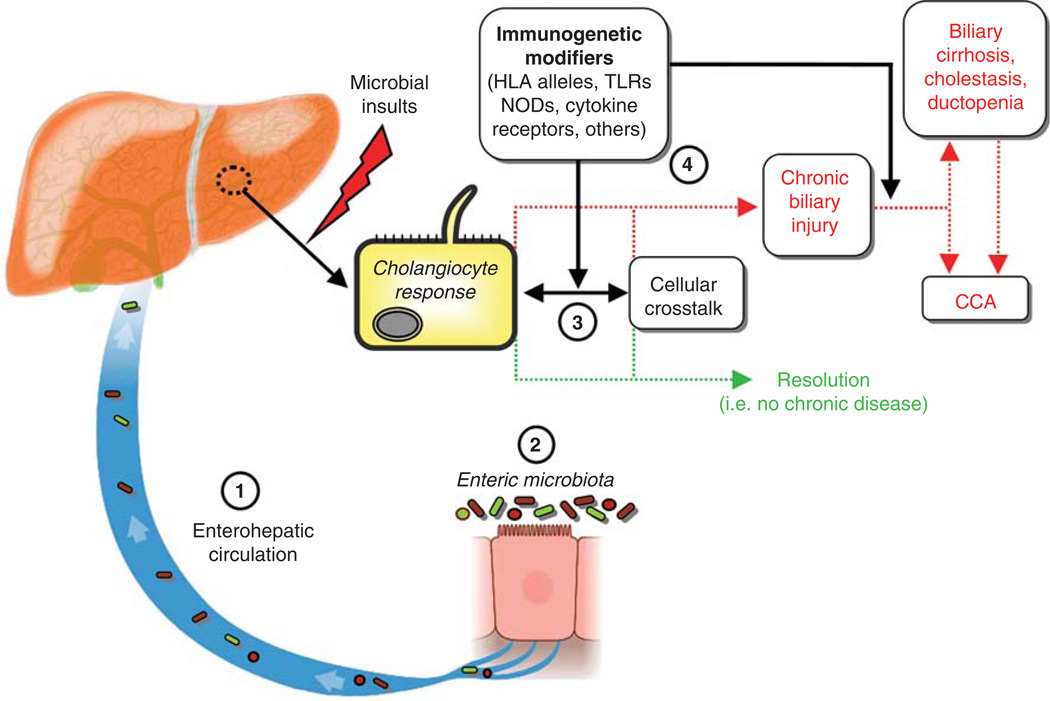Figure 1.
Conceptual model of the etiopathogenesis and natural history of primary sclerosing cholangitis. Biliary epithelial cells, i.e. cholangiocytes, exist in an environment with multiple potential etiologic mediators of hepatobiliary injury. A growing body of basic, translational, and clinical evidence suggests that among these, microbially derived molecules may be central to hepatobiliary injury in and thus the etiopathogenesis of PSC. However, whether there is (1) increased exposure to microbial molecules (e.g. through the enterohepatic circulation, facilitated by compromised intestinal barrier function), (2) alterations in microbial diversity and/or the repertoire of microbial molecules (e.g. due to intestinal microbial dysbiosis), and/or (3) an aberrant or exaggerated cholangiocyte or other hepatic cell response to microbial molecules (e.g. induction of cholangiocyte senescence and the senescence-associated secretory phenotype) remains uncertain. In addition, host immunogenetics may modulate the impact of any of these variables (4) and thus likely play a role in determining whether hepatobiliary injury resolves or if it persists and results in chronic disease (i.e. PSC). These variables may also determine whether PSC progresses to its associated major adverse endpoints, including development of cholangiocarcinoma (CCA), liver failure, and death. Further investigation of the cellular, molecular, and microbial interactions and phenomena represented in this figure, including through previously unavailable (meta)genomic and bioinformatics techniques, will undoubtedly be pursued in future research and is expected to advance current understanding of the etiopathogenesis of PSC.

